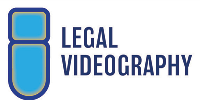Why Lawful Videography Is Essential for Accurate Legal Record-Keeping
In the world of legal procedures, the accuracy of record-keeping is vital, and lawful videography emerges as an essential device in this context. As we explore the diverse advantages of legal videography, one need to consider its implications for the future of judicial stability and transparency.
Significance of Visual Proof
Establishing the significance of aesthetic evidence in lawful procedures is vital for guaranteeing precise record-keeping and enhancing the total integrity of the judicial procedure. Aesthetic evidence acts as a crucial device in documenting events, problems, and various other essential information that may be necessary to a situation. Unlike created accounts, which are prone to analysis and predisposition, aesthetic recordings offer an objective, unalterable depiction of facts as they happened.
This type of evidence can record a range of elements, consisting of witness habits, ecological context, and physical evidence, all of which might affect judicial end results. By offering a clear and thorough visual narrative, legal videography removes ambiguity and aids to preserve the credibility of the proof.
Additionally, aesthetic proof can be critical in lowering conflicts over valid disparities, as it permits a straight comparison versus statement and other documented records. In an age where digital innovation is significantly common, the ability to existing aesthetic evidence efficiently can considerably enhance the total high quality of legal process. Eventually, the incorporation of aesthetic proof not just reinforces the documents process yet likewise reinforces public count on the judicial system by promoting openness and responsibility.
Enhancing Testament Credibility
The combination of legal videography right into court room procedures dramatically enhances the trustworthiness of witness testimony. By recording the nuances of verbal and non-verbal interaction, video recordings provide an even more comprehensive representation of a witness's demeanor, emotions, and integrity. This visual paperwork allows jurors to observe the witness's body movement, faces, and general manner, which are important components that can influence their understanding of testament credibility.

Furthermore, the presence of video clip footage can hinder witnesses from supplying deceptive or overstated statements, as they realize that their testimony is being videotaped. This liability enhances the honesty of the judicial procedure. Ultimately, lawful videography offers as an important device in ensuring that witness testimony is not just accurately shown however also checked out with increased reputation by all events entailed.
Comprehensive Document Preservation
Comprehensive document conservation is crucial for keeping the integrity of legal process. Legal videography acts as a critical tool in this procedure, providing an accurate aesthetic and auditory account of testaments, depositions, and other zero hours in an instance. Unlike standard written transcripts, video recordings catch the nuances of body language, tone, and feeling, which are important for recognizing the context and intent behind statements made during legal procedures.
Including audiovisual elements into record-keeping boosts the conservation of evidence, making certain that it remains intact check that and obtainable throughout the legal procedure. This is especially vital in cases where the reliability of witness statements might be tested, as aesthetic recordings can validate insurance claims and give clarity. Furthermore, video records can be very useful during appeals or retrials, providing an unchanged depiction of the original statement.

Moreover, the capability to assess video clip proof enables attorneys to determine essential information that might have been neglected in created documents. By preserving a detailed archive of lawful procedures with videography, law firms can promote the highest criteria of accuracy and responsibility, ultimately adding to a fairer judicial process.
Streamlining Legal Process
Simplifying lawful procedures is necessary for improving effectiveness and minimizing hold-ups within the judicial system. Legal videography acts as a pivotal device in attaining this goal by supplying clear and precise visual documentation of court hearings, depositions, and testaments - legal videography. This innovation permits real-time recording, guaranteeing that all verbal and non-verbal cues are recorded, which can assist in quicker resolution of disputes
The assimilation of videography into legal processes decreases reliance on traditional approaches, such as prolonged transcripts, which can be taxing to create and review. By having actually access to tape-recorded footage, lawyers can promptly reference essential moments, improving their capability to prepare and existing instances successfully. This immediacy also helps in the clarifying of testaments, decreasing the possibility for false impression.

Admissibility in Court
Precise documentation is vital not just for performance however also for guaranteeing that evidence is admissible in article source court. Lawful videography acts as an important tool in this process, providing a dependable visual document of statements, statements, and occasions. Courts often call for proof to meet details requirements of admissibility, including importance, credibility, and dependability. Top quality video clip recordings can meet these criteria by recording clear audio and aesthetic information that written records may forget.
To be regarded acceptable, lawful videography must comply with established procedures, such as correct equipment use, ideal illumination, and clear sound capture. Furthermore, it is vital to have certified videographers that understand the lawful demands bordering proof collection. legal videography. The chain of wardship should additionally be kept to avoid any kind of insurance claims of meddling or alteration
In addition, legal videography can enhance the persuasiveness of proof by providing jurors with a direct view of the testimony, permitting a much more involved understanding of the instance. In recap, the combination of legal videography right into record-keeping not just sustains performance but also strengthens the honesty and admissibility of proof in court proceedings.
Conclusion
In final thought, legal videography plays a crucial duty in guaranteeing precise legal record-keeping by offering objective aesthetic documentation. This method enhances the reputation of testimonies, preserves comprehensive documents, and simplifies lawful process. In addition, the admissibility of high-grade video clip proof in court additional highlights its relevance. Eventually, the consolidation of legal videography into the judicial procedure promotes transparency and check out here bolsters public trust in the integrity of the lawful system.